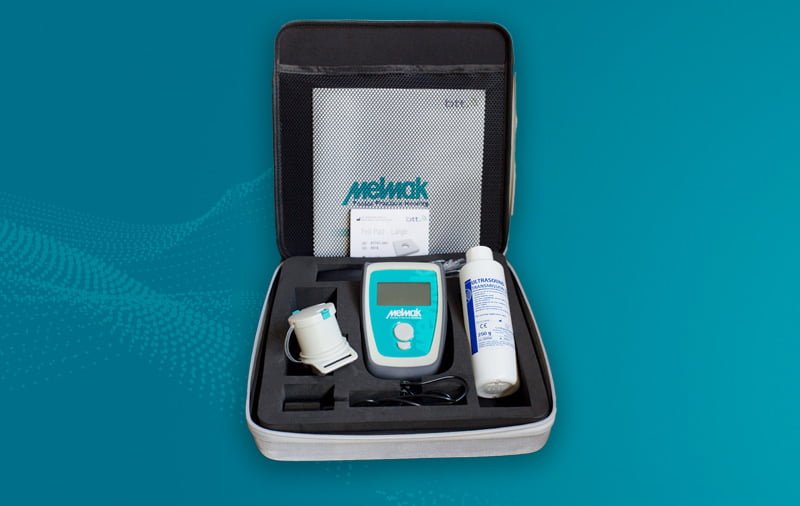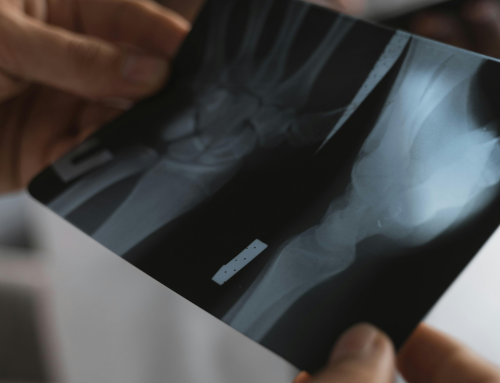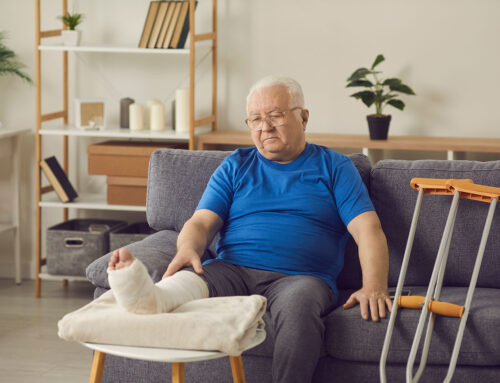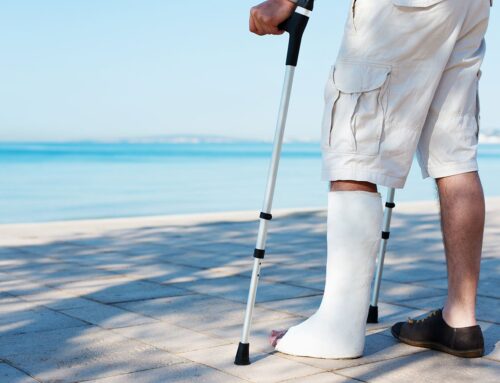Healing at home: using TENS units and bone growth stimulators for fractures
There are many ways to break a bone, from everyday activities like going for a jog to more traumatic events like surviving a car crash. Breaking a bone is always painful but our bodies have the incredible power of healing most injuries on their own.

For a variety of reasons, from health concerns to the location and nature of the fracture, some people experience delayed healing or bones that don’t heal on their own. One in 20 bone fractures fail to heal properly. New technologies can now provide extra help by using electrical or ultrasound energy to speed bone healing and decrease pain. TENS units and bone growth stimulators are devices that can be used at home, without medical supervision, and have little to no side effects.
How bones heal and complications that can arise
After you break a bone, the body forms a blood clot around the fracture to protect it and deliver the cells needed for healing. Then a callus is formed around the broken bone, made of healing tissues, that joins the fracture together. The healing tissue is soft at first then gets harder and stronger over weeks of healing.
Full healing of bones can take several months; a fully healed bone is called a united fracture. A delayed union is a fracture that takes longer to heal but is expected to heal on its own without surgery. A nonunion occurs when a broken bone doesn’t heal on its own and may need surgery. A nonunion fracture becomes an issue because it causes chronic pain, dysfunction to movement, and hinders a person’s return to work and normal activities.
Using electrical currents to ease pain with TENS units
Did you know that bones create an electric field during growth and healing? Increasing that electrical energy can help fractures heal faster.
A TENS (transcutaneous electrical nerve stimulation) unit is a non-invasive pain treatment that may also help heal damaged soft tissues. It has the added benefit of reducing a person’s need for pain medication and damage to the liver. But if not used correctly and under supervision, TENS units can actually be harmful to broken bones.
A TENS unit is a small, portable device with electrode patches that are put on the affected area of the body. The unit delivers small electrical impulses that flood the nervous system — creating endorphins and reducing the body’s ability to transmit pain signals to the brain and body.
TENS devices are great for relieving chronic and acute pain, such as from fractures, arthritis, sciatica, and post-surgery recovery. They are safe for more people to use, with generally no side effects. The electrical impulses can cause a tingling or prickling on the skin which some people may find uncomfortable but are fine for most.
While using a TENS unit to relieve your pain, you have a variety of options for controlling the electrical stimulation. There are controls for changing the duration, intensity, and frequency of the electrical impulses. The frequency is the number of electrical pulses per second; high-frequency pulses help manage acute (short-term) pain whereas low-frequency is better for treating chronic pain.
TENS devices affect people differently, with some people’s pain only being relieved when using the device and others experiencing pain relief for up to 24 hours after use. Tolerance can also be developed if the unit is used daily. But alternating between low and high frequency can help with preventing tolerance from building up.
Fixing broken bones with a bone growth stimulator
While TENS units are good for treating pain, a bone growth stimulator is more effective for healing broken bones and also can provide pain relief. Bone growth stimulators heal fractures with either electrical or ultrasound energy. Ultrasound energy uses sound waves to transmit vibrations through soft tissue and through and around the bone.
Bone stimulators are particularly effective for healing non-union fractures. Electrical stimulations can cause bone cells to proliferate and divide, which accelerates healing of the fracture. Ultrasound energy enhances bone healing by increasing the incorporation of calcium ions in cartilage and bone cells and stimulating the expression of numerous genes involved in the healing process. Bone growth stimulators that use ultrasound energy also impact chondrocytes, the cells found in healthy cartilage, increasing the formation of soft callus on the fracture.
Although electrical stimulators are effective, they often require longer treatments over a longer period of time and are harmful when used with metal hardware. Ultrasound therapy is the most effective, doesn’t cause any thermal heating, and is safe to use with all metal fixations.
Bone growth stimulators come in a variety of sizes, shapes, and technologies. The units are either put on the skin externally or implanted in the body during surgery. A handheld unit is the least invasive and easy to use. Bone stimulators can be connected to electrodes placed on the skin at the location of the fracture, similar to a TENS unit, or as a brace or belt to wear or recline on.
Bone growth stimulators like Low-Intensity Pulsed Ultrasound (LIPUS) units send a painless mechanical force through the tissue to stimulate the bone to heal. They are small, portable devices that can be used in the home, office or on the road, and only need to be used for twenty minutes a day for results. LIPUS devices have been proven to heal non-union fractures by 86%.
Comparing the options for healing your fracture
TENS units are good for soft tissue and primarily used for pain relief, though results vary by person. Bone growth stimulators can speed up the healing of fractures and allow you to get back to normal activities sooner. Electrical stimulation is effective but cannot be used with any metal fixation. LIPUS devices are the best choice for fracture healing as they speed up the process and can be used with metal.
If you use either electrical or ultrasound therapy for your fracture, ensure that you are following your doctor’s guidelines for treatment, rest, and exercise. It’s also important to maintain a nutritious diet to get the essential vitamins needed for healing and to not smoke cigarettes or drink alcohol.
Melmak devices use LIPUS technology for faster treatment of stress fractures. Inline Medical Inc. provides a clinically proven, safe, non-invasive, and easy treatment option for Canadian patients suffering from fractures. This includes the rental of LIPUS devices for at-home treatment of fractures. If you have any questions about how bone growth stimulators could work for you, please contact our team to learn more.





